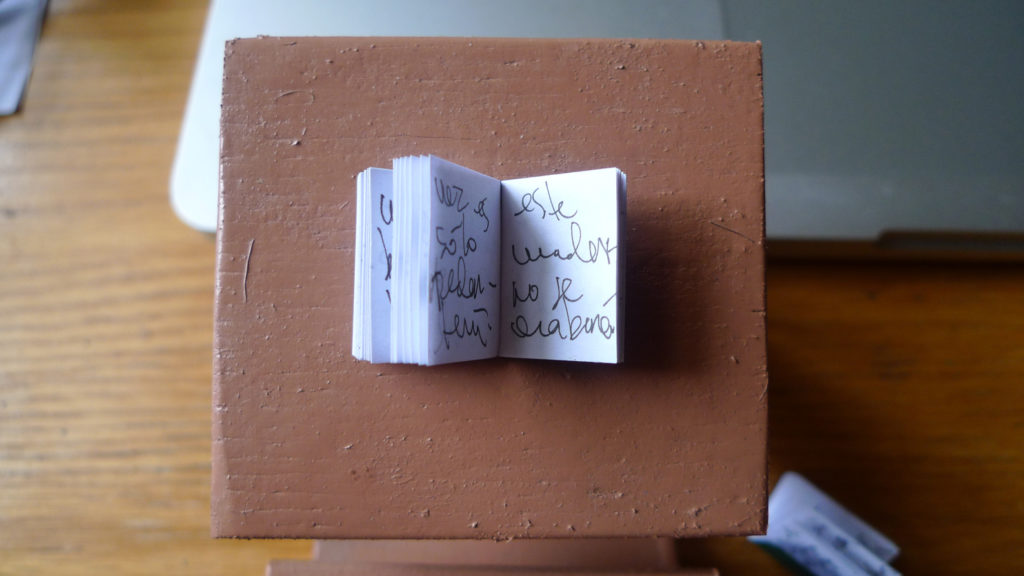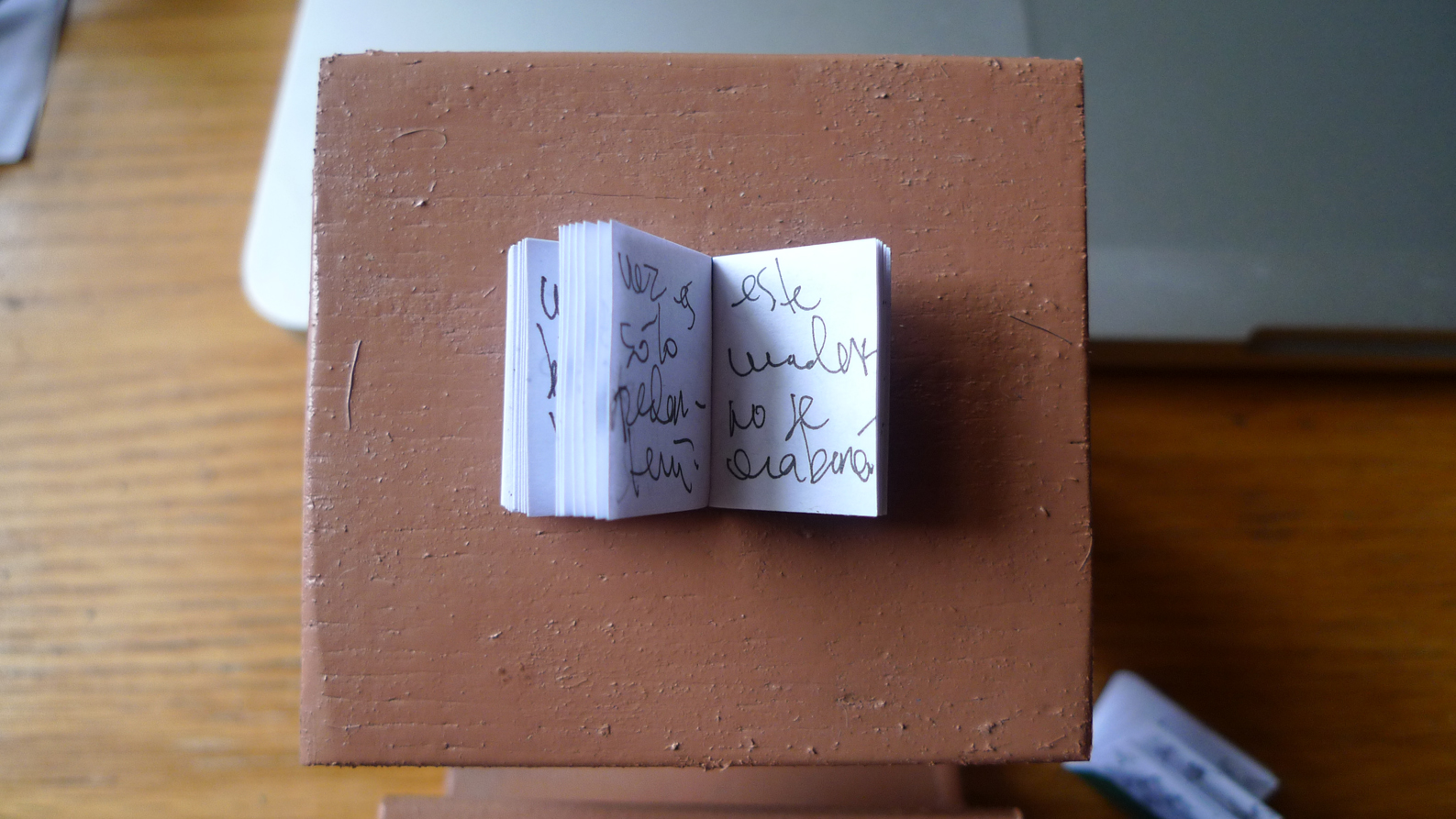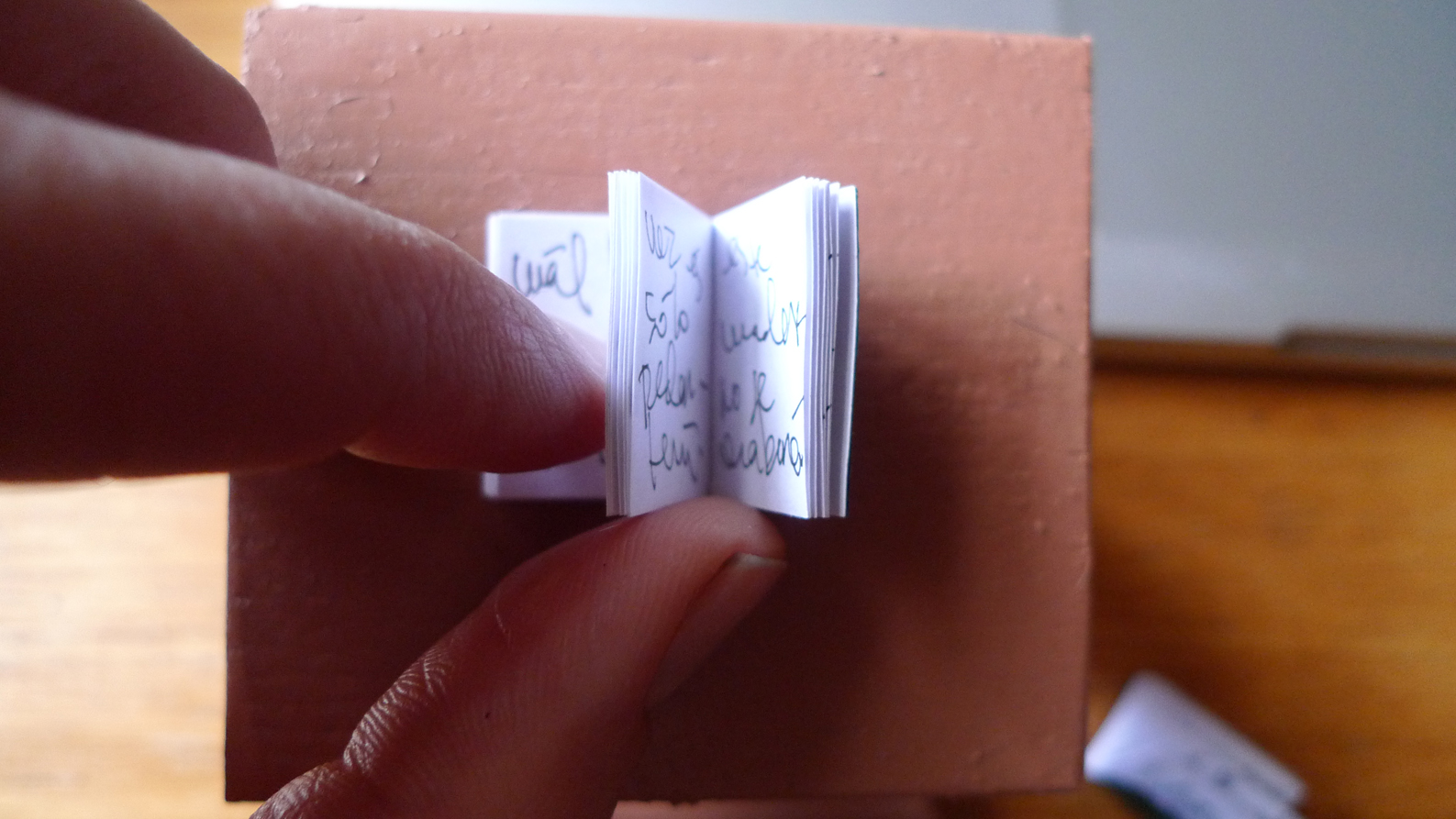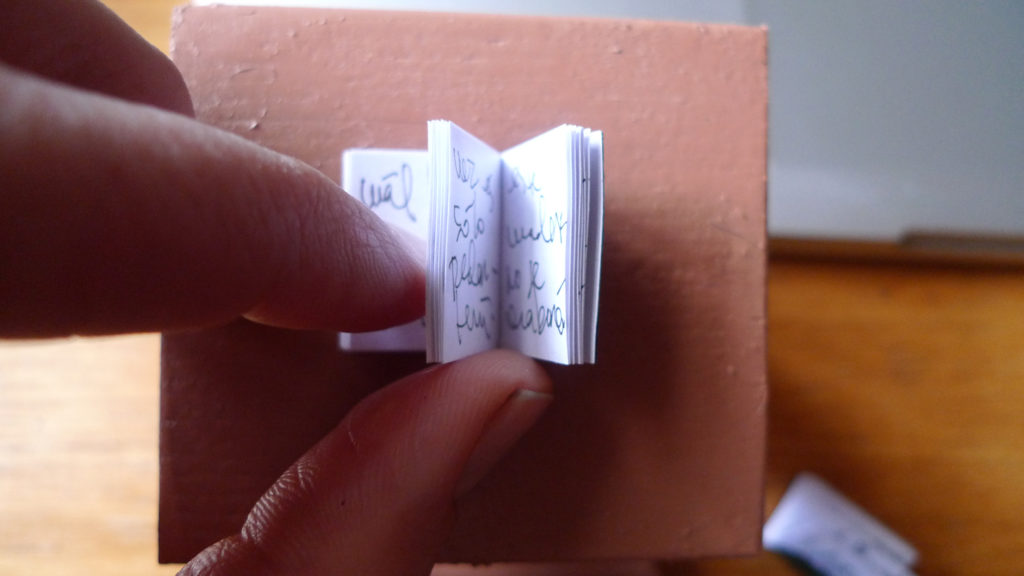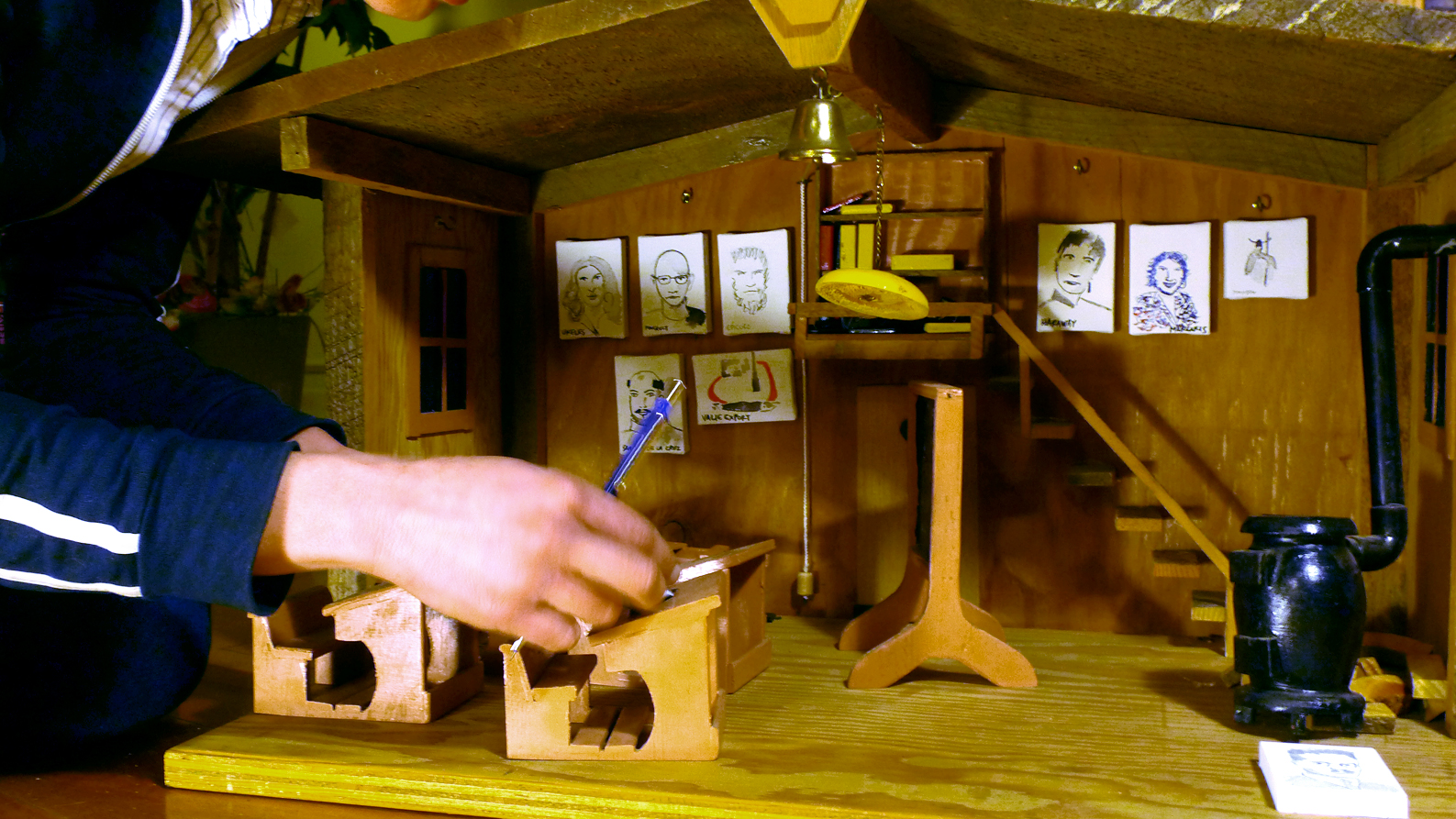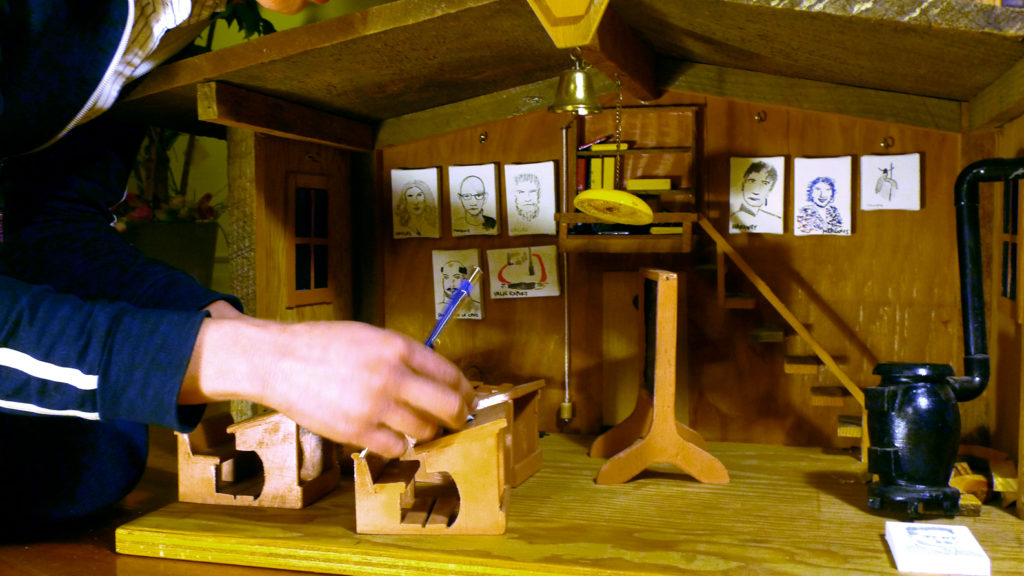2018
I found a dollhouse online. I bought it without a clear plan, just following a collecting impulse. Not exactly a dollhouse: it was a miniaturized old classroom that someone made for his grandson (there is an inscription on the back). Was the classroom modeled upon a real one? It looks like a rural school: there is only one big space, the unpolished outside of the classroom contrasts with the interior. The classroom and its furniture are made of wood. It has six identical desks and one tall chair, probably for the teacher. A blackboard with some names, almost erased but still legible; a wooden stove and firewood for it. Several books that cannot be opened, some of them look like notebooks. A bell that works, a lamp that does not. The classroom had four frames with maps or texts about the Netherlands. Tempting to infer Dutch grandfather, eager to transmit some Dutch heritage to his grandson [1]. There was some (small) terrace furniture that clearly did not belong there (another scale, another materiality) so I removed it.
The classroom was bigger than what I imagined from the pictures in the online ad, big enough to accommodate my arms. Using small notebooks, I started writing on the small desks. The position of the body was painful to maintain (sitting on my ankles) and required discipline, which led me to Foucault’s “Discipline and Punish” (1977). Who else I was referencing with my work? I decided to acknowledge those influences with portraits hanging in my school. On small canvases I painted some portraits with ink. The first were Foucault and Mierle Ukeles. Then Donna Haraway, Walter Benjamin and VALIE EXPORT appeared, among others. Some of the faces were more familiar for me than others; some were more accomplished as portraits than others. I hung the portraits on the walls of my classroom.
I was trying to write about miniatures, and trying to situate my own research in relation to this maintenance time. My research is primarily about domestic space, but it is also about how my research is situated within my domestic space: what does it mean to negotiate research time in a domestic context: in relation to myself, to the professional work I do (mostly at home), to my family. There is frequently humor in my performative work based on this, because of the paradox, the battle always won by the everyday. It is a self-deprecative exercise–a way to not consider my research seriously– but there is also an aim to blur hierarchies among different kinds of work performed at home, considering academic research one of them. My intention was to inscribe the practice of writing as practice, as crafting (Bogost, 2012). By locating the writing as another practice I intended to question, obliquely, its supremacy as a research output.
How can we write about a process within the process, rather than as an afterthought, retrospectively? Making miniatures requires undivided attention. When I try to describe my process I have to remember that state, but it is not there anymore. I intended to play with that gap by writing in miniature: on miniature notebooks on a miniature desk. The first element that appeared in the writing, while writing in small notebooks on small desks, was the awareness of the forced position of the body. I realized that I should keep it, in the context of the performance, for a predefined amount of time, like the duration of a school class. I was writing unceasingly [2], remembering in the body those courses where the teacher was speaking for the whole period and we had to copy what she was saying. It was forced miniature time[3]. In Zen meditation, the correct disposition of the mind comes from the correct disposition of the body. Being in that position, embracing the miniature, made me pay attention to aspects I did not consider before. All the small details of the miniaturized school (the firewood, the curve of the desks, the books) appeared now as individual caring actions from a person to his grandson, a material transference of knowledge. “[M]iniature[s] are false objects that possess a true psychological objectivity” (Bachelard, 1994, p.148). In relation to my own research time, albeit playing, I was positioning it in relation to my references (with the portraits on the wall) and in connection with my domestic context, in a literal and figurative way. However, from the new perspective I adopted, new questions appeared. The portraits, for example: I produced portraits of people that were academic influences for me in general, like national heroes in a school, avoiding too contemporary references. Should I make them, on the contrary, specific to what I was writing about, like a drawn bibliography? What should be the output of my writing? Which other elements belong to my classroom, my contained research space? The engagement with the miniature was producing theoretical and practical questions (if that division is relevant) with results (or failures) at different levels. As Anna Munster stated, “Embodiment is the very process through which the domain of the cultural, technical or aesthetic and the register of the affective, get pulled together” (2012, p.42). The critical play[4] with the small classroom allowed me to embody, and to question, concepts and techniques. In addition, it offers an interesting take on the understanding of technology as practice (Franklin, 1999, p.12), due to the denaturalized exploration of technologies, practices and objects that a critical play with miniatures enables.
The critical play gave me new perspectives on abstract concepts, that also informed my performative approach. I was aware of the research-creation methodology I was using for my main research about networked domesticity. However, this critical play made me see some of the research and creative aspects embedded in what I considered to be only a creative process. Iterating from Thulin’s idea about research-creation as a strange loop (2015), critical play can enlighten the creative and/or the research aspects of the research and the creation present in research-creation. Or “within within within” as Stewart (1993, p.61), describing miniatures, would say.
[3] A video documentation can be seen at https://vimeo.com/149232831. Password: classroom
[4] As generously suggested by an anonymous classmate.

